FRIDAY NIGHT: A few lingering T-storms possible. Low: 69
SATURDAY: Plenty of sun, not as humid. Dew point: 65. High: near 90
SUNDAY: Hazy sun with a few heavy T-storms capable of heavy rain. Wake-up: 72. High: 89
MONDAY: Intervals of murky sun, very hot. Dew point: 71. Wake-up: 73. High: 91
TUESDAY: Sizzling sun. Feels like 100F+ Wake-up: 74. High: 93
WEDNESDAY: Slight relief. Still warm, but turning less humid. Wake-up: 68. High: 88
THURSDAY: More noticeable relief. Blue sky, breathing easier. Wake-up: 63. High: 84
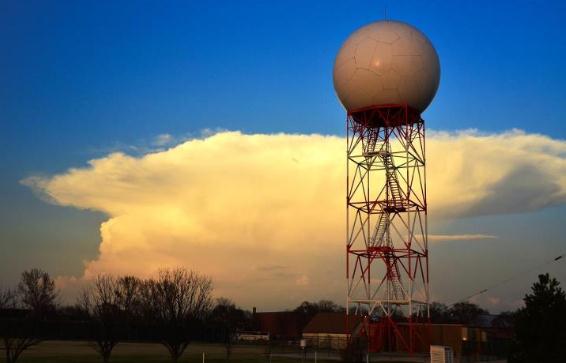
“Atmospheric Sneeze”
We’ve split the atom, cured polio, perfected the microchip and sent men to the moon. But I still can’t tell you exactly what time it will rain today. Chalk it up to a randomly chaotic universe and variables beyond our understanding.
Ironically meteorologists do a consistently better job timing rain and snow from October thru March. Large-scale “synoptic” systems are hundreds, even thousands of miles wide with steady “stratiform” precipitation, not the hit-or-miss “convective” showers and T-storms we deal with during the summer months. These miniature thermals of rising air are 5-10 miles in diameter; they get lost in the sauce. New NOAA weather models like RAP and HRRR do a better job of predicting “windows” when storms are most likely, but timing them down to the hour or minute?
Good luck.
Conditions are ripe for strong to severe storms today; I expect watches & warnings close to home. The heat index will be groan-worthy, reaching upper 90s by the dinner hour. Dew points drop to more tolerable levels over the weekend with sunshine and highs in the upper 80s. Stuffy 90s return Monday–Tuesday before a cooler front of Canadian heritage has us all breathing easier late next week.

Remembering The July 23, 1987 Twin Cities “Superstorm”. This is the storm that spawned 11″ of rain for parts of the metro area, closing a stretch of I-494, as well as tornadoes for the northwest suburbs. Details via TC Media Now: “Continued day after coverage of the record breaking Super Storm “of the century” that pounded the Twin Cities on July 23, 1987 with rain, tornadoes, flooding, hail and wind. On this report from July 24 Paul Douglas examines the patterns of the storms, Paul Magers, Diana Pierce anchor coverage along with reports from Dennis Feltgen, Kevin MacDowell, Kirstin Lindquist and others.”
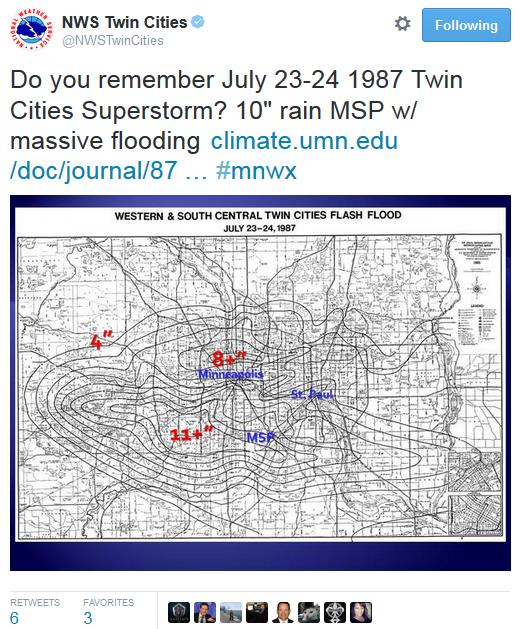
Graphics Have Improved Since 1987. That, sadly, was my first reaction to this timely tweet from the Twin Cities National Weather Service. Check out the 11″ bullseye over the southern and southwestern suburbs. I remember it well, and the Minnesota Climate Office has more details on the Super Storm here.

Hope Grows That El Nino Will Reach Northern California – And Key Reservoirs. Every El Nino is different, but some of the warmest Pacific ocean water since 1997-98 raises the odds of a wet winter season for California. Here’s an excerpt from The Los Angeles Times: “…That could change if El Niño continues to muscle up, enabling storms to elbow into the north. That’s what happened during the two biggest El Niños on record, in 1982-83 and 1997-98. “If this El Niño continues to strengthen, it would not surprise me to see … all the lines extend farther north,” bringing the far reaches of the state into a zone where odds favor a wet winter, NOAA Climate Prediction Center Deputy Director Mike Halpert said. El Niño can shift the so-called subtropical jet stream from the jungles of southern Mexico and Nicaragua north, over Southern California and the southern United States, said Bill Patzert, a climatologist with NASA’s Jet Propulsion Laboratory in La Cañada Flintridge…”
Image credit above: “A comparison of the November 1997 and July 2015 El Niños in the Pacific Ocean west of Peru. Areas of warm water, shown in red, in 1997 contributed to relentless, damaging storms in California that winter. Note: This image has been edited to add a key and to express degrees in Fahrenheit.” (National Oceanic and Atmospheric Administration Environmental Visualization Laboratory)
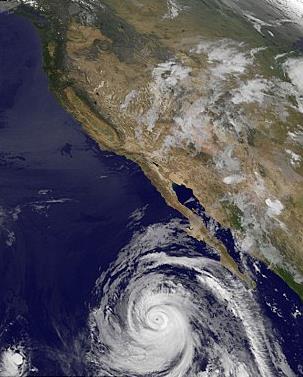
What’s The Likelihood of a Hurricane Hitting California? Don’t laugh too hard. It’s a remote possibility yes, but the probability is greater than zero, especially during an El Nino year when Pacific water is unusually warm and storms can retain their strength farther north. Here’s an excerpt from The Weather Channel: “…And while it’s not all that uncommon for tropical moisture to make it to California, many have been asking: could a hurricane make landfall on the West Coast? History shows a hurricane landfall is possible, but if it happened, it would be in Southern California. On Oct. 2, 1858, a hurricane came ashore and caused widespread damage in San Diego. That unnamed hurricane was the last, and only, example on record of a hurricane coming ashore on the West Coast. In 1939, a tropical storm made landfall along the California coast at Long Beach, according to Weather Underground...”
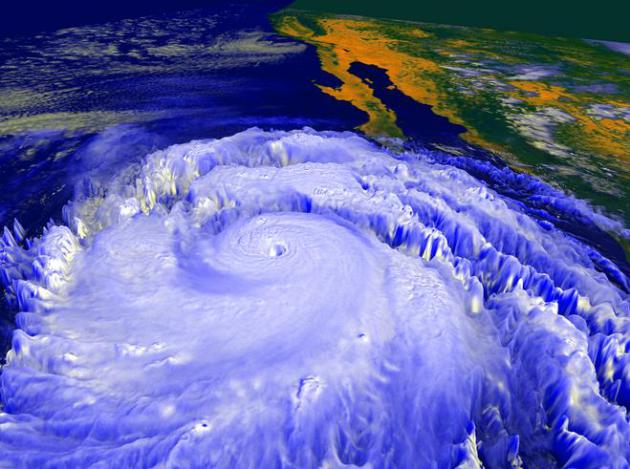
Last Big Hurricane Scare for California: 1997’s Hurricane Linda. What’s interesting is that the current El Nino is being compared to 1997-98, when trade winds subsided and El Nino-warmed water spread unusually far north, providing a potential runway for Hurricane Linda to run all the way up to California. It never happened, but we came close. Here’s an excerpt from my book, Restless Skies: “On September 9, 1997 Hurricane Linda formed about 700 miles southwest of the Baja peninsula. As the storm slowly moved north along the Mexican coastline, El Nino’s warm waters caused Linda to grow explosively into a large howling hurricane, with sustained winds up to 185 mph, and gusts over 200 mph. Linda had become the most powerful East Pacific hurricane in the history of weather records. As the storm swirled and strengthened, growing even larger and deadlier, meteorologists were stunned as they pored over the forecasts comong out of the computer models. The extreme hurricane would most likely slam the coast somewhere between San Diego and Los Angeles. El Nino had slowed the prevailing westerly winds, allowing warm, 80-degree water to linger, thereby providing a fertile breeding ground for a hurricane to churn north toward Southern California. It was a perfect storm of warm water and raging winds. Los Angeles seemed to be in Linda’s crosshairs. At almost the last moment and upper-level trough, a stormy wrinkle of cold, windy air aloft, moved erratically, and Hurricane Linda veered out to sea.…” (Image: NASA)
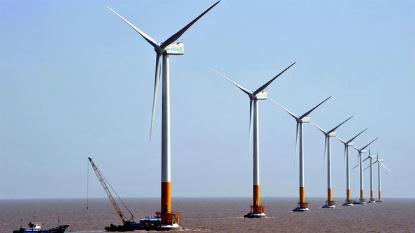
Renewable Energy Accounts for 70% of New U.S. Generating Capacity In First Half of 2015. Here’s the intro to a story at EcoWatch: “In yet another clear indication of the nation’s energy future, renewable sources—biomass, geothermal, hydropower, solar, wind—accounted for nearly 70 percent (69.75 percent) of new electrical generation placed in service in the U.S. during the first six months of 2015…”

A “Third Way” To Fight Climate Change. Will we see the breakthroughs and price drops in carbon capture required to make this a viable way to address climate change? I wouldn’t rule anything out at this point. Here’s a snippet from a New York Times article: “Two options for dealing with climate change — reducing greenhouse gas emissions through a global agreement, and geoengineering proposals such as injecting sulfur into the stratosphere — tend to dominate current thinking. But there is a “third way” that is almost entirely neglected in political negotiations and public debate. It involves capturing carbon dioxide from the atmosphere and storing it or using it to create things we need. Because of the scale of the climate problem, I believe that in coming decades third-way technologies will become a major focus of activity...”
Graphic credit above: Alec Doherty.
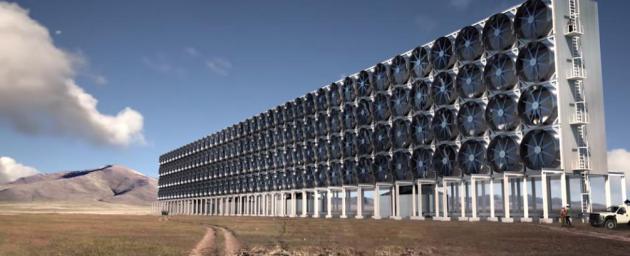
Scientists Are Building A System That Could Turn Atmospheric CO2 Into Fuel. This is the kind of innovation we’re going to need – new technologies we can’t even imagine (today) that will help us solve this problem and have the economic growth we need, but not at the expense of adding to greenhouse gas pollution and climate volatility. Here’s an excerpt from ScienceAlert: “…Scientists in Canada are developing an industrial carbon dioxide recycling plant that could one day suck CO2 out of the atmosphere and convert it into a zero-carbon e-diesel fuel. Developed by tech start-up Carbon Engineering and partly funded by Bill Gates, the system will essentially do the job of trees, but in places unable to host them, such as icy plains and deserts. Just like these new solar cells that are designed to split water into a hydrogen fuel, the CO2 recycling plant will combine carbon dioxide with hydrogen split from water to form hydrocarbon fuel…” (Image: Carbon Engineering).

The Tiny Islands Where Canada and America Are At War. I had no idea – here’s a snippet of a story at Maclean’s: “Canada is one wrong move away from a border war with the United States—if you believe a group of boiling-mad Maine lobstermen. Unfathomable as armed conflict between Canada and the United States seems, if it’s going to happen, it will be in the ocean between Maine and New Brunswick, where two tiny, treeless islands—North Rock and Machias Seal—are the last remaining disputed lands between the two countries…”
Photo credit above: “The Canadian flag flutters in the breeze Monday, Sept. 8, 2003, by the lighthouse at Machias Seal Island. The Canadians man the lighthouse on this island claimed by the US and Canada in The Gray Zone waters between the two countries.” (Fred J. Field/CP).

“My Exposome” Wristwatch Detects Personal Exposure to Chemicals. This makes sense, especially if you live in a chemical-prone area or work around dangerous chemicals. Here’s the intro to a story at Gizmag: “While our awareness that potentially harmful chemicals lurk unseen in our environment may have grown, most of us still have no idea these substances might be or whether we are exposed to them. A bracelet called MyExposome is designed to answer that question by helping determine exactly which chemicals we’re exposed to during everyday life...”
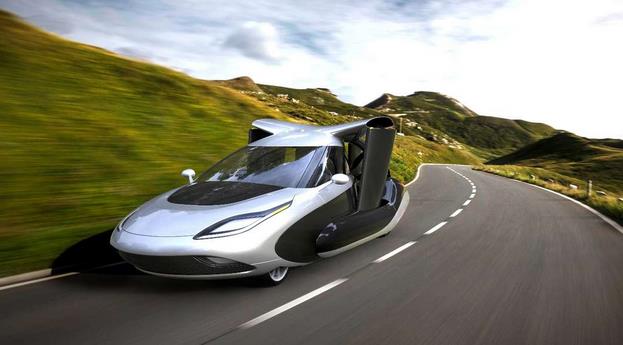
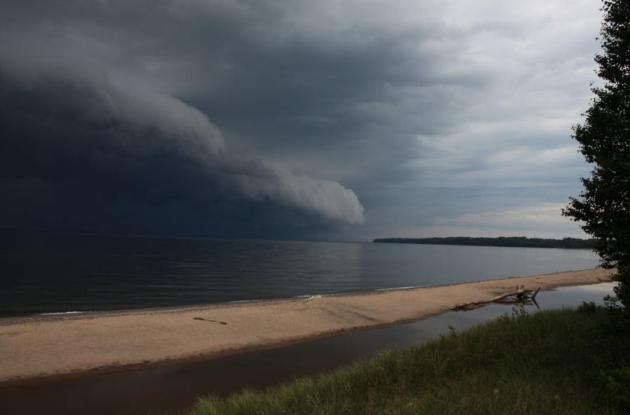
Climate Stories….

Minneapolis Mayor: Debate over Climate Change Not An Issue at Pope’s Summit. Here’s the intro to a story at The Star Tribune: “After two days of meetings in Rome with mayors from around the world on climate change, Minneapolis Mayor Betsy Hodges said she realized a familiar topic at home hadn’t been part of the conversation. Leaders of cities from outside the U.S. didn’t seem to have to spend much time debating the matter with people who don’t believe in climate change, the mayor said in a call with local media on Wednesday. “I noticed that, probably about halfway through today, and just realized that climate change deniers cast a pall on the conversation in the United States,” Hodges said. “And that as far as I can tell, it does not extend to anywhere else in the world...”

Hansen Paper: “2C Temperature Rise is Very Dangerous”. Here’s an excerpt of the paper abstract at ACPD: “There is evidence of ice melt, sea level rise to +5–9 m, and extreme storms in the prior interglacial period that was less than 1 °C warmer than today. Human-made climate forcing is stronger and more rapid than paleo forcings, but much can be learned by combining insights from paleoclimate, climate modeling, and on-going observations. We argue that ice sheets in contact with the ocean are vulnerable to non-linear disintegration in response to ocean warming, and we posit that ice sheet mass loss can be approximated by a doubling time up to sea level rise of at least several meters. Doubling times of 10, 20 or 40 years yield sea level rise of several meters in 50, 100 or 200 years. Paleoclimate data reveal that subsurface ocean warming causes ice shelf melt and ice sheet discharge…”
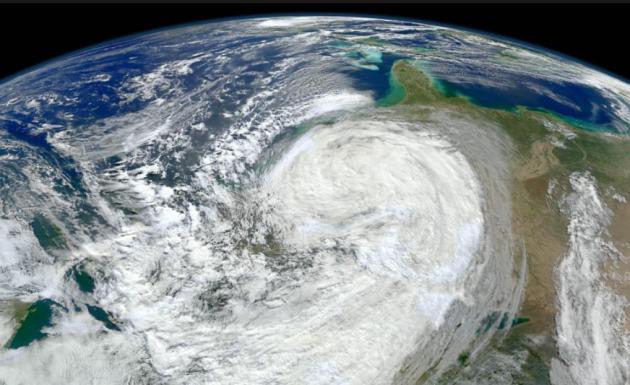
11 Ways Climate Change Affects The World. The one I’m most focused on is extreme weather: does a warmer, wetter climate overall increase the potential for 3-sigma and even 5-sigma weather events? The early answer appears to be yes. Here’s #11, an excerpt from a story at CNN.com: “The planet could see as many as 20 more hurricanes and tropical storms each year by the end of the century because of climate change, according to a 2013 study published in the Proceedings of the National Academy of Sciences. This image shows Superstorm Sandy bearing down on the New Jersey coast in 2012.”
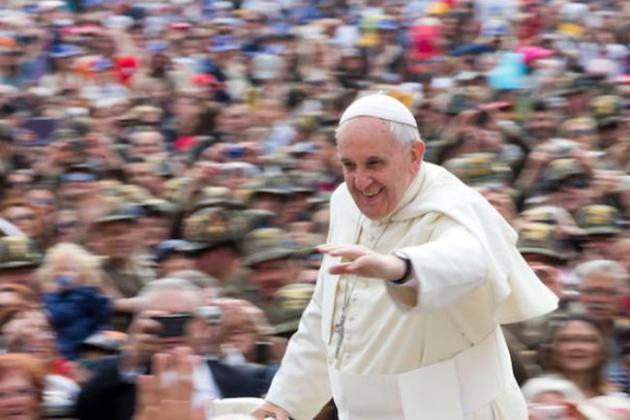
Is Global Warming Real? Is The Pope Catholic? I believe the answer to both questions is yes, based on all available evidence. Here’s an excerpt of a post at Boise Weekly: “…An editorial in the June 19 edition of the Idaho Catholic Register, titled “Pope Francis sees the forest for the trees,” states that the pope is not trying to “convince the inconvincible” that climate change exists, but instead demonstrate why humanity should be concerned. The editorial notes that the encyclical “is likely to make Catholics carrying political party cards of every stripe uncomfortable,” but reminds Idahoans that “inequality is played out even in Idaho, where the electrical grid will be overwhelmed in the weeks ahead as the demand for power for air conditioning will result in unexpected shutdowns as demand increases with rising temperatures. Who pays the steepest price? The poor, shut-ins and seniors who have no way to avoid or escape the heat…”
File photo above: AP.

Jerry Brown Places Hope For Climate Change Action in Church. The Sacramento Bee takes a look at the spiritual walk of California’s governor, and why he believes Pope Francis will have a significant impact on climate action; here’s an excerpt: “…Brown would return to religion in later years. And now in his fourth term as governor – and in his signature initiative, climate change – Brown is placing hope in the church. For two days at a climate summit in this center of Christendom, Brown repeatedly called for the “moral dimension” to help coalesce support for policies to reduce carbon emissions ahead of global talks in Paris in December. In speeches and interviews, he affixed his agenda to that of Pope Francis, whose recent encyclical on climate change focused public attention on the issue. Francis, Brown said, “will influence tens of millions – and maybe hundreds of millions of people – so that’s important...”

Heavy Summer Rain in Greenland Speeds Up Ice Melt. ScienceNordic has an interesting, and vaguely troubling story – here’s an excerpt: “…The new study shows that these heavy rain events have occurred frequently due to the warmer, wetter weather of the last 20 years, penetrating deeper into the ice sheet, making it move and melt faster. “We saw 10 to 15 % of the total annual surface melt occur in this unusual week of warm, wet weather in late summer 2011. When this water reached the bed, the ice sheet lifted up and moved faster,” says Sam Doyle, from Aberystwyth University, UK, lead author of the new study, which has just been published in Nature Geoscience. According to his colleague and co-author, professor Jason Box of the Geological Survey of Denmark and Greenland, their results add more weight to scientists’ concerns of the sensitivity of the entire Greenland Ice Sheet to melting…”
Photo credit above: “Formation of lakes on the Greenland Ice Sheet after the main melt-season due to warm wet weather and heavy rain. Later this water drains to the bottom of the ice sheet enabling it to move and melt faster. This makes the ice sheet more vulnerable to such rapid melt events as the climate warms, scientists say in a new study.” (Photo: Sam Doyle).
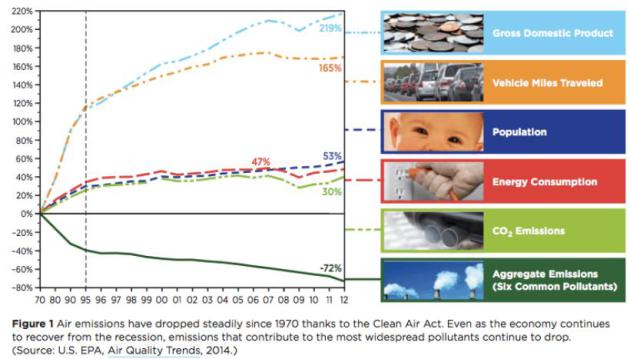
Is Climate Policy Reaching a Turning Point? Vox has an interview with EPA Administrator Gina McCarthy; here’s an excerpt: “…Part of the challenge is that we’re trying to do a couple of things here. We’re trying to identify what further reductions are achievable by every state. Because we want to make sure that every unit [i.e., coal or gas plant] can actually achieve the reductions we’re intending to achieve. So for some states, because of how far they’ve already moved with renewables and efficiency programs, they’re far ahead of others, and they have infrastructure in place that will allow them to continue this downward trend. Whereas states that have not been engaged or do not have that infrastructure will take a bit longer [to cut emissions]...”

The Climate Terminator: “Climate Changes Is Not Science Fiction” TIME has a story about Arnold Schwarzenegger’s fight to raise climate awareness and climate action; here’s an excerpt: “…I’ve starred in a lot of science fiction movies and, let me tell you something, climate change is not science fiction, this is a battle in the real world, it is impacting us right now,” Schwarzenegger said on Tuesday at the first “summit of conscience for the climate.” Schwarzenegger addressed an audience that included spiritual leaders from many religions, as well as climate change experts. “I believe the science is in. The debate is over and the time for action is now,” Schwarzenegger continued…”
Photo credit above: “This photo provided by Paramount Pictures shows, Arnold Schwarzenegger as the Terminator in “Terminator Genisys,” from Paramount Pictures and Skydance Productions.” (Melinda Sue Gordon/Paramount Pictures via AP).

The 5 Telltale Techniques of Climate Change Denial. Here’s an excerpt from a John Cook story at CNN.com: “…The link between conspiratorial thinking and science denial has serious and practical consequences. Conspiracy theorists are immune to scientific evidence, as any evidence conflicting with their beliefs is considered part of a conspiracy. The implication is that the most effective approach is not changing the mind of the unchangeable. Rather a more fruitful approach is communicating the realities of climate change to the large, undecided majority who are open to scientific evidence. A crucial part of the puzzle is explaining the techniques of science denial. This has the powerful effect of inoculating people against the misinformation of climate science deniers.“

